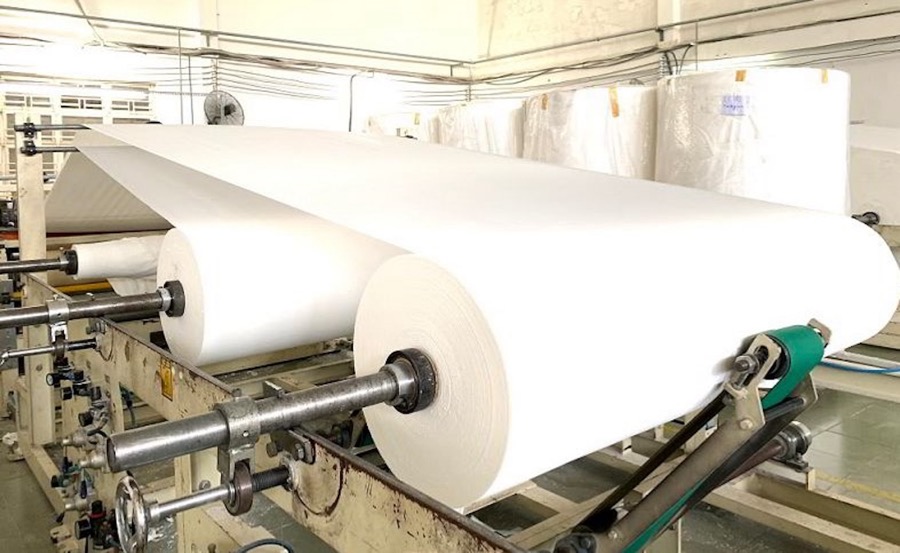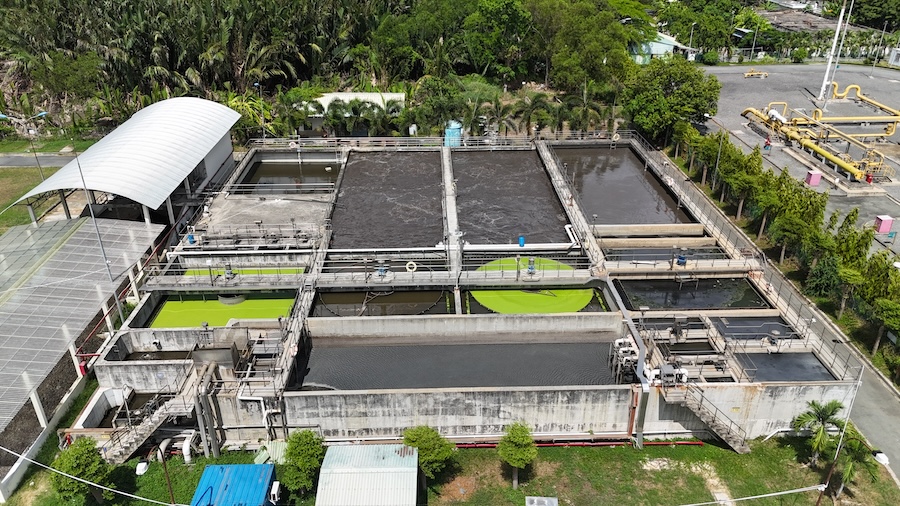The paper manufacturing industry is one of the industrial sectors that consume large amounts of water and generate wastewater with high pollution levels, especially organic matter, lignin, and bleaching chemicals. Effectively treating this wastewater not only helps businesses comply with environmental regulations but also contributes to protecting water resources and minimizing environmental pollution. The following article provides information about the characteristics of wastewater in the paper industry, common treatment technologies, and solutions from Đại Nam Environmental Solutions Company.
1. General introduction to the paper manufacturing industry
The paper manufacturing industry is one of the key industrial sectors, playing an essential role in daily life and the economy – from printing products and packaging to hygiene and education. The paper production process involves many stages such as raw material processing, pulping, bleaching, and paper pressing – all of which consume large amounts of water and generate wastewater with high pollution loads, especially organic compounds, bleaching agents, and lignin.
Treating wastewater in the paper manufacturing industry is a mandatory requirement to minimize environmental impacts, ensure legal compliance, and support sustainable development. If not properly treated, wastewater from this industry can cause severe pollution of rivers and streams, reduce biodiversity, and directly affect community health. Therefore, investing in an efficient wastewater treatment system is an essential requirement for all paper production facilities today.

Learn about the paper manufacturing industry today
2. Characteristics of wastewater in the paper industry
Wastewater in the paper industry typically has a very high organic pollution load, shown through indicators such as COD, BOD, SS, pH, and color. In addition, the wastewater contains lignin – a compound that is difficult to biodegrade – along with bleaching chemicals such as Cl⁻, ClO₂, or H₂O₂, which can seriously affect the environment if not properly treated.
Wastewater is mainly generated from stages such as raw material washing, pulp grinding, bleaching, and paper pressing. Each stage discharges large volumes of water containing pulp, fiber residues, chemicals, and organic substances, causing complex fluctuations in flow rate and composition.
3. Wastewater treatment technologies for the paper industry
3.1. Bar screen
Wastewater from the paper production process is first passed through a bar screen system to remove coarse waste, large solids, and insoluble objects. This stage helps protect the piping system and downstream treatment equipment, preventing blockages or damage.
3.2. Settling tank
After passing through the bar screen, the wastewater enters a settling tank to remove small solid particles, paper scraps, and heavy sludge. The clear water at the top will continue to the next treatment steps, while the retained sludge is handled separately.
3.3. Equalization tank
The equalization tank balances the flow rate and wastewater quality, helping the system operate stably. Since paper industry wastewater often has a slightly acidic nature, pH adjustment at this stage is necessary to ensure the effectiveness of subsequent physico-chemical treatment steps.
3.4. Coagulation – flocculation
At this stage, coagulants and flocculant aids are added to bind small particles and suspended solids in the wastewater into larger flocs. This effectively removes pollutants that are difficult to settle, preparing the influent for the UASB tank.
3.5. Dissolved Air Flotation (DAF)
The DAF tank is used to separate dissolved solids (TDS) and fine suspended matter using the lifting force of microbubbles. This technology is especially effective for wastewater containing large amounts of lignin, pulp, and organic chemicals.
3.6. UASB anaerobic tank
The UASB (Upflow Anaerobic Sludge Blanket) is an anaerobic treatment technology that decomposes organic substances in wastewater through processes such as hydrolysis, acid fermentation, and methane production. This system not only reduces COD/BOD but also generates CH₄ gas that can be used for energy purposes.
3.7. Aerotank
Next, the wastewater is transferred to the aerobic biological tank (Aerotank), where microorganisms use oxygen to completely decompose remaining organic compounds. Continuous aeration is maintained to ensure stable operation of the aerobic microbial population.
3.8. Biological settling tank
In this tank, biological sludge settles to the bottom, with a portion recirculated back to the biological tanks to maintain the density of microorganisms. Excess sludge will be treated or dewatered periodically. After the entire treatment process, the effluent must meet the QCVN 12-MT:2015/BTNMT – Column A or B standard, depending on the receiving source. Compliance with discharge standards is a mandatory commitment to ensure sustainable and environmentally friendly operations.

Standard wastewater treatment process for the paper manufacturing industry according to QCVN 12-MT:2015/BTNMT
4. Effective wastewater treatment solutions for the paper industry from Đại Nam
Đại Nam Environmental Solutions Company provides turnkey paper manufacturing wastewater treatment systems, flexible to the scale and specific characteristics of each facility. With an experienced team of engineers, Đại Nam applies advanced anaerobic – aerobic biological technologies combined with modern physico-chemical processes such as UASB, Aerotank, DAF, etc., ensuring effluent meets QCVN 12-MT:2015/BTNMT standards.
In addition to designing and constructing new systems, Đại Nam also offers services to upgrade and renovate old treatment systems, optimizing operations and reducing operating costs. Đại Nam’s solutions guarantee stable and sustainable treatment performance, aligning with the circular economy trend and current legal requirements in the paper industry.

